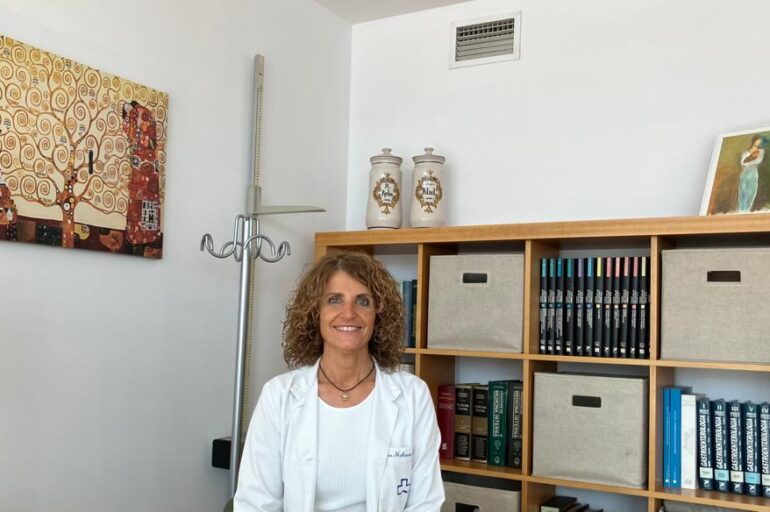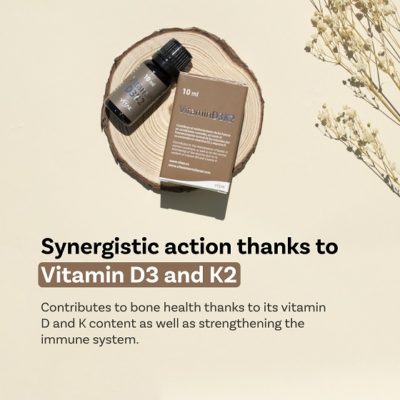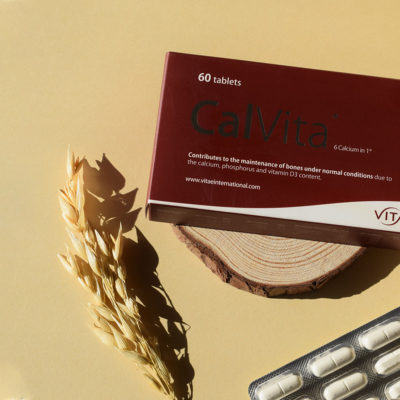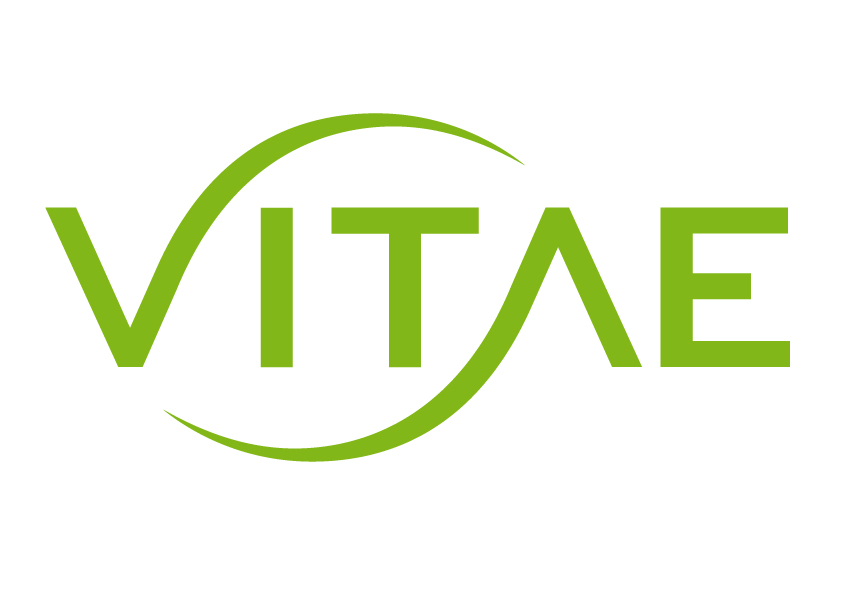On the occasion of World Menopause Day, it is essential to open an informed and understanding dialogue about this natural stage in women’s lives. Menopause, an inevitable biological milestone, entails significant physical and emotional transformations that impact women around the world in diverse ways. In addition to its physical manifestations, menopause also brings with it a series of often overlooked psychological and social issues. It is crucial to approach this transition from a holistic and empathetic perspective, recognizing both its challenges and its possibilities for growth and self-care. In this article, we will explore the key aspects of menopause, from its physical symptoms to its impact on mental health and quality of life. In addition, Dr. Helena Rutllant , head of our oncology line and doctor specializing in nutrition (Corachan Clinic of Barcelona ), explains us the reason for the appearance of some symptoms during the menopause stage and how to prevent or improve them.
Main symptoms of Menopause
Specifically, a common characteristic in all women is the sudden drop in estrogens and progestogens, responsible for a large part of the physiological changes experienced during this stage, during which we can find:
- Vasomotor symptoms: sweating/hot flashes, palpitations…
- Psychological/emotional symptoms: emotional lability, anxiety, depression, asthenia, fatigue and sleep disorders
- Osteopenia, osteoporosis
- Difficulty controlling weight
- Dry skin and mucous membranes, especially Vaginal Dryness.
- Alopecia, nail disorders …
- Digestive disorders
At a certain age, the first signs of menopause begin to appear and with them all the changes that this new life stage implies. What happens when we reach menopause?
The word menopause only means last menstruation, therefore, it is the transition period between the reproductive stage and the non-reproductive stage. Obviously menopause will mark the cessation of menstruation. We can know it is the last one when none appear for 12 months.
It is a vital period in a woman’s life regulated by the decrease in ovarian activity and, therefore, it will be characterized by a decrease in the production of estrogens and progestogens, the deficiency of which will mark the appearance of a series of symptoms or pathologies.
What are the phases of menopause?
Menopause does not happen overnight. It consists of a gradual decrease in ovarian function and estrogen levels. This transition, known as climacteric, usually occurs in three phases: perimenopause , menopause and postmenopause.
- Perimenopause : the transition from the reproductive to the non-reproductive period in a woman’s life begins between about 2 and 8 years before the definitive cessation of menstruation. This transition period, known as perimenopause , is characterized by more irregular menstruations and cycles that can be reduced to 25, 23 or even 21 days, with periods being longer and more abundant.
- Menopause: Menopause is a normal physiological process in a woman’s life that involves the definitive disappearance of menstruation for 12 consecutive months and without an illness that causes it. In Spain, it usually occurs around 50 years of age.
- Postmenopause: it is the phase after menopause, in which the most acute symptoms subside in most cases. However, the lower level of estrogen increases the risk of suffering from different diseases such as cardiovascular diseases or osteoporosis .
You have mentioned that in this process women suffer from a decrease in ovarian function and estrogen levels. Is this related to dry skin and mucous membranes?
Indeed, and this happens because estrogens play a vital role in collagen production and moisture retention in the skin. When estrogen levels decrease, the skin tends to become thinner, drier and less elastic, which can manifest as wrinkles, sagging and a dull appearance.
Additionally, reduced estrogen levels can cause a decrease in the vagina’s natural lubrication, leading to vaginal dryness. This dryness can cause discomfort during sexual activity and increase the risk of vaginal irritation and infections.
What can we do to help or avoid this situation?
Balanced diet: Maintaining a balanced diet rich in fruits, vegetables, lean proteins and healthy fats can help improve skin health and keep it hydrated from within.
Proper hydration: Drinking enough water daily can help keep skin hydrated and prevent dryness.
Using moisturizers: Regularly applying moisturizers rich in ingredients such as hyaluronic acid, glycerin and ceramides can help retain moisture in the skin and improve its elasticity.
Avoid using harsh soaps: Opting for gentle, fragrance-free cleansers can help prevent dryness and irritation in the skin and vaginal area.
Regular exercise: Regular physical activity can help improve blood circulation and contribute to healthier skin.
Avoid tobacco and alcohol: Both smoking and excessive alcohol consumption can contribute to dry skin and worsen menopausal symptoms.
Consume dietary supplements rich in omegas: Omegas 3 and 7 help promote blood circulation, which can increase blood flow to vaginal tissues and improve the overall health of the skin and mucous membranes. It has been suggested that these fatty acids may also help regulate estrogen levels in the body, which may have a positive impact on vaginal health during menopause.
You also mention that ailments such as osteoporosis may appear in the postmenopause phase. What exactly is osteoporosis and why does it occur during this time?
We could define osteoporosis as a loss of bone mass that ends up compromising the resistance of the bone, producing a greater risk of fractures in the event of falls or serious bruises.
The previous step is osteopenia where we would see a decrease in bone mineral density, although not all women with osteopenia will necessarily end up with osteoporosis. Therefore, early diagnosis is very important to prevent the progression to a more serious form of bone demineralization.
The cause of both (osteopenia and osteoporosis) is a lack of estrogen which will cause a lack of calcium in the bones.
It should be noted that during the first 5 years of menopause, up to 5% of bone mass can be lost,
Is there a way to prevent osteoporosis?
We have to be aware that perimenopause can last up to 5 years, so any preventive action during this period will be of vital importance in order to prevent osteoporosis or delay the appearance of a series of diseases.
Specifically, there are three basic pillars to avoid or prevent osteoporosis: physical exercise, a varied and balanced diet with the presence of foods rich in calcium and correct levels of vitamin D.
If we have not arrived on time, what do we have to do to alleviate this pathology?
First of all, we must assess whether we are in a situation of osteopenia or osteoporosis.
It is always important that the points mentioned above are met, so if we do not exercise we will try to incorporate that habit into our lives, according to our individual situation (there is a wide variety of activities) and we will analyze our diet in detail. As a point, mention that the need for calcium from the age of 50 increases to 1.2-1.5 gr/day.
Regarding foods rich in calcium, we would highlight:
- Dark green leafy vegetables (watercress, kale , etc.)
- Sesame (can be taken in the form of tahini , as a dressing in salads, vegetable creams, etc.)
- Dairy
- Nuts (almonds, hazelnuts, dried figs, etc.)
- Broccoli
- Chickpeas, beans, tofu…
- Sardines, salmon, crayfish…
- Eggs
- Mushrooms
It is also important to know that diets rich in salt and/or with excess phosphorus (carbonated and cola drinks, processed foods with a large amount of additives, etc.) will cause a decrease in the absorption of calcium, especially if we have levels of low vitamin D. In this case, we must supplement appropriately and sunbathe for 10 minutes a day. This vitamin has receptors in 30 cells of our body, so having optimal levels will allow us to satisfy all the body’s needs correctly.
If osteoporosis is established, apart from the three previous steps to follow, we should ensure that the calcium circulating in the blood serves to mineralize the bone, and therefore, after a correct anamnesis, the addition of vitamin K could be advised along with with vitamin D.
Regarding the symptoms that menopause triggers, what type of treatments are available to us?
As I have already said, the symptoms are very varied, each patient will have to be assessed individually and depending on the needs the protocol will be different.
Despite this, some symptoms of menopause can be effectively combated with natural supplementation, especially if these symptoms affect the skin and mucous membranes . One of the most common indicators of menopause is vaginal dryness. In this sense, one of Vitae’s most effective food supplements is OlioVita in pearl format and OlioVita intimate in topical cream format, based on sea buckthorn oil rich in omegas.
Additionally, as we have touched on the topic of osteoporosis, Vitae has two products that will help prevent or alleviate osteoporosis .
Vitamin D3 K2 is a combination based on vitamin D3 and menaquinone (vitamin K2, trans-MK7) that contributes to bone health thanks to its content of vitamin D3 and vitamin K2 that promote the absorption and normal use of calcium and phosphorus and the maintenance of bones under normal conditions.
CalVita® is a combination based on calcium salts, phosphorus, vitamin D3 and dry bamboo extract, which is highly effective thanks to its high bioavailability.
It is important to mention that each woman and each patient is a world, so it is important to carry out a personalized and 360º diagnosis, which encompasses the entire state of health and lifestyle habits of the person.
Thank you very much for this magnificent interview that helps us learn more about menopause!






